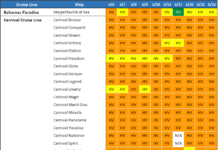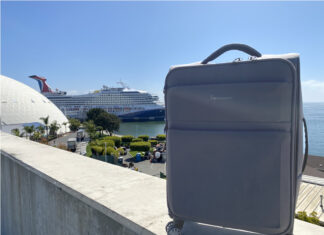During a hearing in front of the Senate Health Committee, Dr. Rochelle Walensky, the director of the CDC, shared some insight regarding her agency and the cruise industry.

Specifically, Dr. Walensky commented on the upcoming move of the CDC rules for cruising to voluntary status, the rise in case counts on ships during the Omicron wave, and also praised the industry for its compliance.
The comments came following a question from Senator Lisa Murkowski of Alaska. Ms. Murkowski was instrumental in efforts to bring back a partial Alaskan sailing season this summer when ships were allowed to sail without stops in Canada.
The senator asked the CDC director for some assurance that in light of the cruise industry’s adherence to the Conditional Sailing Order — which is set to expire in just a few days — that ships would be able to sail to Alaska this summer.
In response, Dr. Walensky first praised the cruise industry and what they’ve done to sail safely.
“I think the Conditional Sail Order and the fact that the industry has stepped up and is now interested in doing and exceeding, as you note, the compliance with the sail order without the order even necessarily needing to be in place is a real testimony to how well that has worked and how we’ve worked collaboratively with the industry,” said Walensky.
That order from the CDC covers multiple aspects of cruising’s return, including guidelines and requirements around masking, testing, quarantines, and much more. And while the rules are technically only voluntary already for ships sailing from Florida, cruise lines have continued to follow them.
Comments on Rising Case Counts on Ships
Dr. Walensky also had comments regarding cases on cruise ships during the Omicron wave. While the protocols put in place stemmed the number of cases through the Delta wave, Omicron is able to spread more quickly and better evades vaccines. That has led to many more cases.
And due to the CDC’s protocols regarding testing and tracking, positive cases within the cruise industry have been much more visible compared to other forms of travel. For instance, while cruise ships have testing requirements, hotels, theme parks, casinos, and domestic air travel do not.
The CDC has shared some data regarding cruises and positive cases. First, the vast majority of ships have “yellow” or “orange” status according to the agency’s daily color status report. This indicates possible cases on a ship within the past week.
It was also recently announced that more than 5,000 cases were found on ships under the CDC’s orders during the second half of December.
During her testimony, Dr. Walensky referenced a rise in cases.
“What I can say is just over the last two weeks with Omicron, we’ve seen a 30-fold increase in cases on ships during this season because of Omicron,” she said.
In other words, despite the protocols the new variant is still impacting the cruise industry significantly.
CDC Rules Likely to Move to Voluntary
What about the future of CDC oversight of the cruise industry? Currently the CDC’s Conditional Sailing Order is set to expire January 15. After that day, the order is to move to voluntary status.
There have been questions as to whether the order will be allowed to expire given the high number of cases being seen. Previous orders have been extended in the past, so an extension is not unprecedented.
On that front, Dr. Walensky’s testimony confirmed the order will most likely expire and the CDC will move to assist cruise lines with mitigating spread instead of enforcing requirements.
“We anticipate this order will not be renewed, and the cruise ship industry will continue to understand that this is a really safe practice for those industries,” Dr. Walensky said.
And what about the original ask from Senator Murkowski for assurance that cruises will sail to Alaska in 2022?
“What I can’t predict is what the summer will bring,” the CDC director said.
You can view the comments by Dr. Walensky here. Her discussion of cruising begins at 2:14:30.












